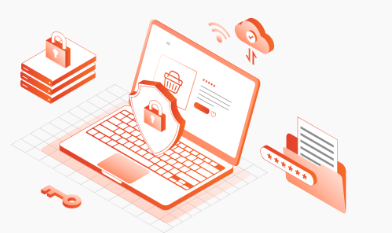In today’s rapidly evolving digital landscape, businesses face constant threats from cyber adversaries who aim to exploit vulnerabilities in network defenses. One critical tool to combat such threats is the secure browsing gateway. This innovative technology serves as a gatekeeper, meticulously filtering and monitoring the web traffic that enters and exits an organization’s network. Doing so becomes a formidable barrier against unauthorized data breaches and malicious activities.
With cyberattacks becoming more sophisticated and frequent, robust digital defenses are no longer optional but imperative. Secure browsing gateways protect sensitive organizational data and ensure compliance with numerous data privacy and security regulations. Across diverse sectors, from finance to healthcare, implementing these gateways has proven crucial in safeguarding both user data and operational integrity. Organizations prioritizing such technology demonstrate a proactive approach toward cybersecurity, addressing potential threats and minimizing their impact.
A layered security strategy is analogous to constructing a fortress to withstand various attacks. Each security layer acts as a different line of defense, covering the deficiencies of others and creating a more comprehensive shield against cyber attacks. The layered approach is fundamental because relying on a solitary security mechanism can be risky and often insufficient. Just as wearing multiple layers of armor protects a knight in battle, employing various cybersecurity measures fortifies an organization’s defenses against multifaceted threats. For example, incorporating a secure browsing gateway can help filter malicious content and prevent access to harmful sites, reinforcing network security as part of a broader defense-in-depth model.
Organizations can effectively address an array of threats by deploying multiple defensive solutions, such as firewalls, intrusion detection systems, anti-virus programs, and secure web gateways. According to a TechRepublic report, this strategy minimizes the risk of successful entry by making it increasingly challenging for a threat to breach all layers of protection. Hence, the multi-tiered defense enhances security and fosters confidence within the organization and its stakeholders. This depth of protection allows organizations to remain resilient in the face of increasing cyber challenges.
Secure web gateways perform the crucial task of inspecting outbound and inbound web traffic in real-time. They act as sentinels that enforce compliance with the organization’s security policies. Through various filtering processes, these gateways can intercept and block potential threats such as malware, spyware, or phishing schemes before they can cause damage. This constant vigilance ensures the integrity of the organizational network by preemptively identifying and neutralizing threats at the perimeter, thereby preventing them from infiltrating deeper into the system.
Furthermore, secure web gateways enhance productivity by restricting access to non-business-related sites and content that may distract employees. This controlled browsing ensures that network resources are used efficiently and appropriately, aligning with organizational goals and increasing operational efficacy. By maintaining a secure digital environment, organizations can focus on growth and innovation without the constant fear of cyber threats disrupting their operations.
- Begin by conducting a thorough risk assessment to identify potential vulnerabilities within the network infrastructure. Understanding these risks is key to deploying appropriate defensive measures, as it guides decision-making processes and ensures that resources are directed where they are needed most.
- Carefully select a secure web gateway that aligns with the organization’s size, industry requirements, and specific security needs. Ensure the chosen solution is robust enough to offer comprehensive protection and adapt to evolving threats.
- Seamlessly integrate the chosen secure web gateway within the existing cybersecurity infrastructure. This integration should be smooth, ensuring continuity in operations without introducing complications or bottlenecks.
- Establish ongoing protocols for monitoring and updating the system. As new threats emerge, it is crucial to continually adapt and update defensive measures to maintain a high-security posture. Regularly reviewing and refining security strategies ensures the organization remains a step ahead of potential cyber adversaries.
While advantageous, implementing secure web gateways does present particular challenges. These can include the complexities of deployment and potential network performance issues. Installing these gateways requires skilled personnel and strategic planning to avoid disrupting daily operations. Ensuring that staff are adequately trained in managing and maintaining these systems is also crucial for maximizing their effectiveness.
However, these challenges highlight the necessity for expert involvement and careful planning. Organizations can successfully navigate these obstacles by employing a structured approach and leveraging the expertise of cybersecurity professionals. Investing in high-quality solutions and ensuring regular reviews also enables organizations to optimize their defenses, thus making any initial challenges a worthwhile investment in long-term security. Additionally, proactive management of these systems allows for swift adaptation to new threats, ensuring continuous alignment with security objectives.
As cyber threats continue to be complex, the cybersecurity landscape will inevitably evolve in response. Secure web gateways will increasingly incorporate advanced technologies such as artificial intelligence and machine learning to bolster their threat detection and response capabilities. AI-driven solutions can anticipate malicious activities by analyzing vast data and recognizing patterns that might elude traditional security systems.
Furthermore, integrating secure web gateways with these virtual infrastructures will be crucial as organizations shift toward cloud-based solutions. Thus, the future of cybersecurity promises greater technological innovation and a more secure and adaptable framework for protecting digital assets. Organizations that stay abreast of these trends and invest in emerging technologies will position themselves to effectively counteract future challenges, secure their data, and maintain trust with their stakeholders.
Related Articles
A&Ta – Meaning, Uses, and What You Need to Know!
20 Packing Hacks to Save Space and Time
Enter into the Realm of ESG Course
